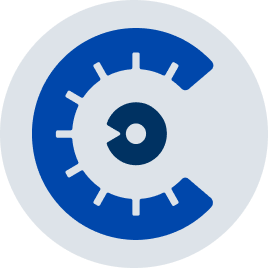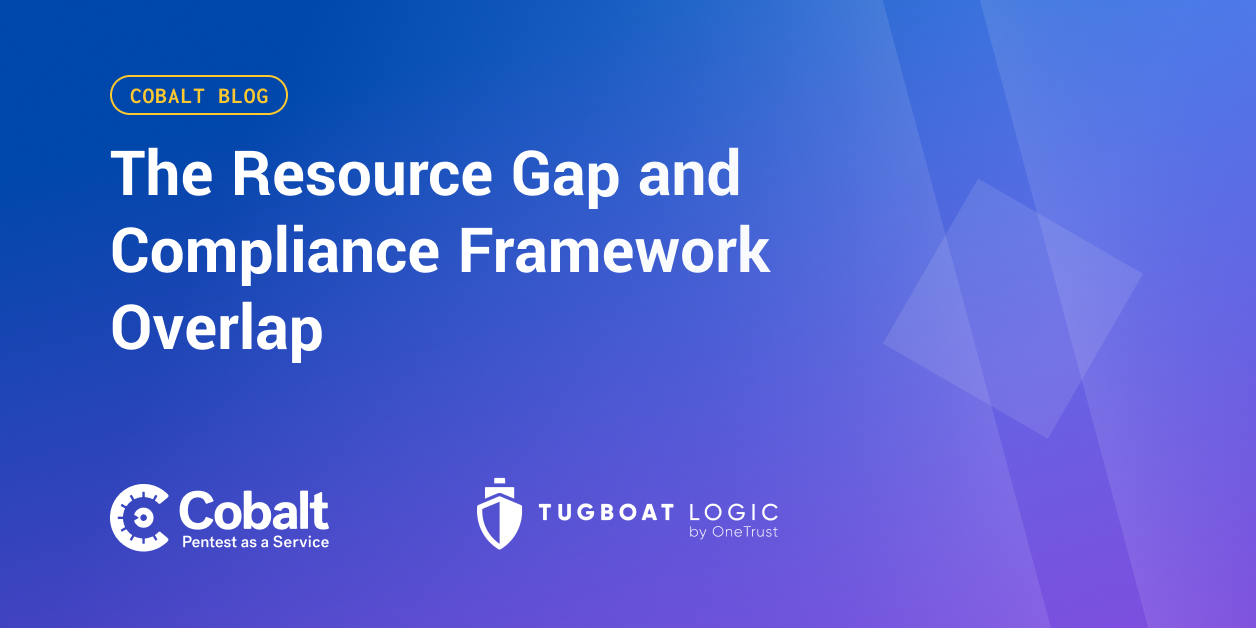Due to COVID-19, a business’s success has a new champion — their cybersecurity team. In the blink of an eye, these whiz kids facilitated remote work. They configured clouds and software capabilities while achieving and maintaining compliance. And now, two years into the pandemic, they're exhausted. Of course, everyone feels the burnout, which led to what's been dubbed the Great Resignation.
IT and tech departments were already understaffed, so how do companies navigate the great resignation, address the resource gap, and obtain compliance? They hack the system and investigate the framework compliance overlap.
Cybersecurity Resources
Before the Great Resignation was even on anyone's radar, the need for skilled tech workers was snowballing. In the United States, the employed cybersecurity workforce consists of just over one million people. There are nearly 600,000 unfilled positions. On a larger scale, according to a 2021 Cybersecurity Workforce study by (ISC)2, the cybersecurity industry needs 2.72 million workers worldwide.
These staffing deficiencies have potentially severe ramifications. For example, system misconfigurations, critical patch delays, and lackluster threat monitoring contribute to data breaches and ransomware attacks. Oversight of processes and procedures is common and shortcuts are taken for essential tasks like risk assessments.
These staffing deficiencies have potentially severe ramifications. For example, system misconfigurations, critical patch delays, and lackluster threat monitoring contribute to data breaches and ransomware attacks. Oversight of processes and procedures is common and shortcuts are taken for essential tasks like risk assessments.
With that in mind, here are two approaches companies can employ to address the resource gap without sacrificing security:
- Increase InfoSec training for all employees
- Use third parties to fill in workforce gaps through automation
Many organizations still only provide cybersecurity training once—during the onboarding process. However, as the weakest link and main vulnerability to an organization's cybersecurity, constantly educating employees about cyber threats and their consequences is critical to the success of your business.
Training employees regularly creates other opportunities to close the resource gap. It provides employees with the skills to prioritize, interpret, learn about, and practice cybersecurity. Instruction also enables InfoSec leaders to distribute the workload to non-subject matter experts. Delegation to the "non-InfoSec savvy" employee helps save time. It creates risk awareness throughout the organization more naturally and consistently.
Several frameworks like SOC 2, ISO 27001, and GDPR require regular training. Attestations are a lot of work, but it's why they're the gold standard and signifiers of trust. However, achieving and maintaining compliance with any framework involves a lot of energy and effort from your tech teams. It's a never-ending cycle of onboarding and off-boarding, reviews and updates of policies, controls, and evidence collection.
It's essential to build a strategy that works for your current company size and invest in software that automates the process, incorporates education into your business-as-usual activities, and scales with you.
Do More With Less by Utilizing Framework Overlap
Every Information Security team focuses on keeping the company secure and compliant with regulations and compliance frameworks. SOC 2 is one of the most sought-after attestations on the market. It's universally recognized and applicable to most businesses. But geographically, it may not meet all your needs. For example, if you conduct business in California or the UK, you'll also need to comply with CCPA or GDPR. It's common for international teams to manage multiple frameworks simultaneously.
Even in our modern world, too many teams use spreadsheets and Google Drives. There's a folder to manage for each audit, and every time they update a piece of their program, they have to update each folder. Then, they notify stakeholders. Organizations lacking in-house experts assume this old-school manual method keeps costs low and simplifies the process.
Unfortunately, this practice is inefficient and wide open to mistakes. Can you imagine sales teams conducting cold calls with a rotary phone in 2022? Or prospecting door to door? Most people don't realize that security frameworks have plenty of controls in common and businesses spend a needless amount of time and money duplicating security processes to comply with each framework. With the ongoing Great Resignation and continued talent shortage, companies must understand how to do more with less.
For example, here are three requirements that ISO 27001 and SOC 2 share:
- Encryption of Data at Rest
- Password policy and enforcement
- Vendor Risk Assessment Report
In fact, the trio of shared requirements listed above applies to almost every InfoSec framework. With the right tools, teams can implement controls and collect evidence once instead of multiple times.
Work Smarter, Not Harder With Tugboat Logic
We can't solve your staffing shortage, but we can help close your resource gap and help you hack the framework overlap.
Tugboat Logic is the only tool that offers seamless framework mapping for over a dozen frameworks and can help you use the overlap to your advantage. With our new compliance overlap tool, you can see where you are in your compliance journey and strategically plan your next steps. Now, you can confidently add the security standards you need to fuel your growth without duplicating your work.

Ever wonder what the difference is between NIST and ISO 27001 compliance? Or HIPAA vs. HITRUST? Our blog is full of educational resources to help you on your compliance journey.
At Tugboat Logic, we provide a tool for companies to have a central system of record and simply map each document or control to the appropriate audits and frameworks. And, you can automate cybersecurity awareness training and compliance. We'll help you build one InfoSec program and get you certified with multiple compliance frameworks.
If you’re looking for a stress-free and straightforward way to get compliant, contact us today to learn more about our product. And, if you’re ever confused or a little overwhelmed about framework overlap, don’t hesitate to get in touch with us. Our team of ex-auditors and security veterans has over 100 years of combined experience. We’re always here to help.
One InfoSec program. Multiple compliance frameworks. Do more with less.
















.png)


